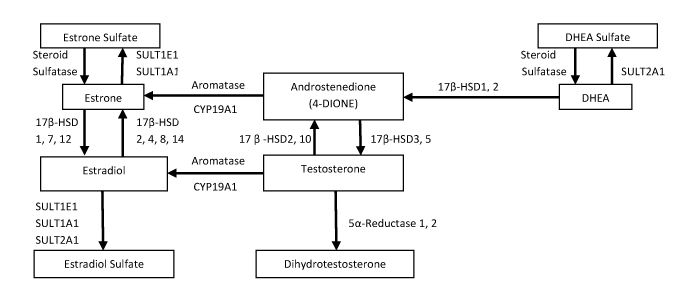
 |
| Figure 2: Schematic diagram of potential metabolic and biosynthetic pathways for sex steroids in the human prostate. Abbreviations include: DHEA, dehydroepiandrosterone; HSD, hydroxysteroid dehydrogenase with numbers indicating the various isozymes involved; SULT, sulfotransferase; CYP, cytochrome P450; CYP19A1 indicates Aromatase. SULT1A1 has been identified in prostatic tissue. SULT1E1 is found in both normal prostate, and benign prostatic hyperplastic tissue and is decreased in prostate cancer cells. The isoflavone daidzein serves as a substrate for SULT1A1, and at higher concentrations, it will inhibit SULT1A1 activity. Genistein is a substrate for SULT1E1, and at higher concentrations, it will inhibit both SULT1E1 and SULT1A1. See text for details. SULT2A1 has not yet been identified in prostatic tissue [43]. The figure is adapted from references 41 and 42. |